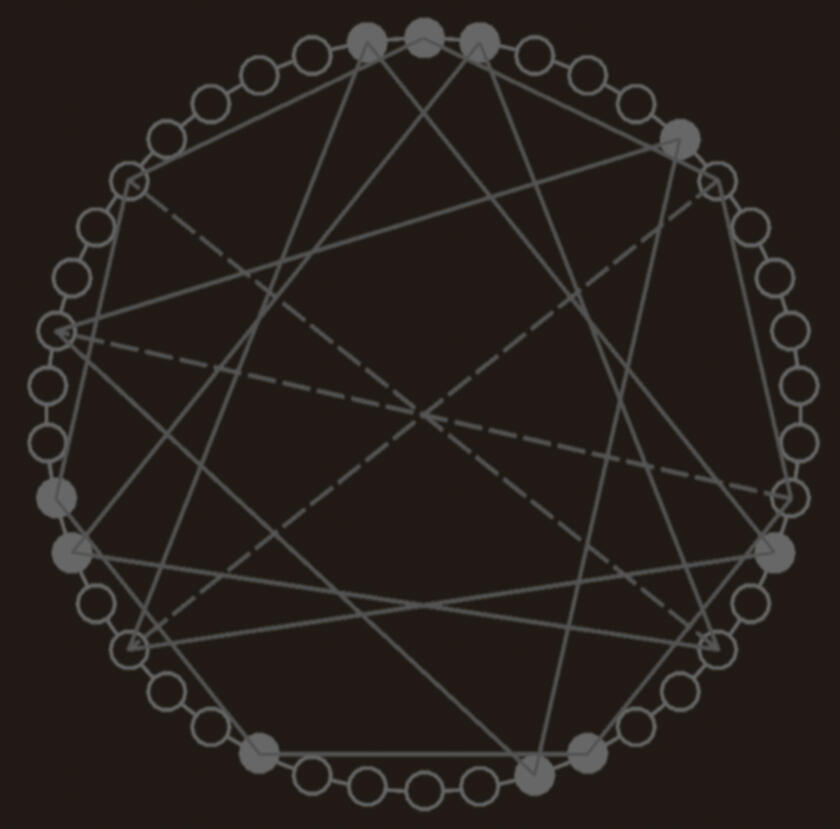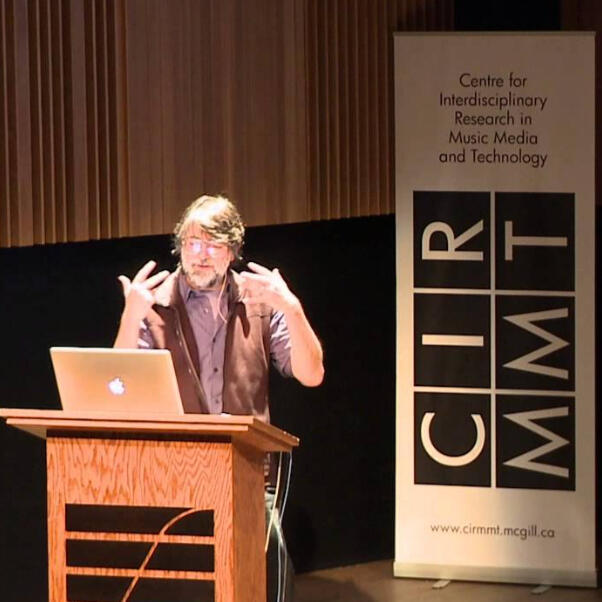
XronoCircles
An Exploration of Rhythm with
Music Technology Pioneers
Montage of 3 XronoCircles

In "The Geometry of Musical Rhythm," Godfried Toussaint studies hundreds of rhythms from around the world wrestling with the question: Why are these rhythms so popular while other, seemingly similar patterns, are overlooked and rarely used? Toussaint collects several mathematical measures and finds that many of the world's most enduring rhythms share certain mathematical properties. We embody these- along with our own discoveries into audio-visual digital art pieces, at the center of algorithmic generation and human composition.
What Makes a Good Rhythm Good?

Godfried Toussant
The XronoCircles Algorithms

Maximally Even; Well-Formed; Perfectly Balanced- the three defining algorithms of XronoCircles digital artworks. These algorithms have been found to be novel mathematical generalizations of the polyrhythms common in, for example, sub-Saharan African music and Balkan folk rhythms. These principles allow us to create an almost infinite variety of rhythms in almost any imaginable time signature.
These are also sometimes called Euclidean rhythms because they can be generated from an early algorithm described by Euclid in the Elements. According to Douthett and Krantz (2007), maximally even sets "apply to a number of seemingly disparate problems including the dinner table and concentric circles problems, the one-dimensional antiferromagnetic Ising model, and musical scales." We explore applications to musical rhythm!
Algorithm 1:
Maximally Even
"Vinyl Spirit"
Algorithm 2:
Well-Formed
"Aural Awakening"
In the study of musical tunings, Well-Formed scales embody those which have the most regularity possible. For example, the 7 most regularly spaced tones out of 12 chromatic tones is the major scale. Translated into rhythms, Well-Formed patterns have no more than 2 sizes (analogous to the large and small scale steps, the major and minor seconds) and hence are well suited to the creation of interesting and syncopated rhythmic structures.
Think of a rhythm in polygon form: if the center of gravity of the polygon lies at the center of the circle, the rhythm is called: Perfectly Balanced. Perfectly Balanced rhythms, which embody both mathematical symmetry and perceptual clarity, were introduced at the conference on Mathematics and Computation in Music (in 2015) in a paper by Andy Milne, David Bulger, Steffen Herff, and Bill Sethares. They form a compelling basis on which to create algorithmic rhythmic patterns.
Algorithm 3:
Perfectly Balanced
XronoCircle Discovery
"Time Temple"
So What is a XronoCircle?

Bill Sethares at CIR MMT Conference
Χρόνος in Ancient Greek (pronounced "kronos") means time. of XronoCircles are time-circles on which temporal patterns play. We have extended the static polygonal notation to include a moving dot (indicating the current moment) and to dynamic overlapping polygons which pulse organically and colorfully whenever the polygon is activated. Assigning interesting sounds to the time points at the vertices of the polygons gives an integrated visual and auditory experience. The patterns may be Maximally Even, they may be Perfectly Balanaced, or they may be Well-Formed, but they are always interesting!
How we got here
One of the themes that runs through Andy and Bill's work is the idea that human perceptions can be modeled using mathematical and algorithmic processes. Both have contributed to the psycho-acoustic and perceptual literature, with papers in major journals such as Music Perception, Journal of the Acoustical Society, Computer Music Journal, Journal and Mathematics and Music, etc. The confluence of algorithmic music composition, perceptual, and ethnographic studies (see Andy's recent paper about music perception in indigenous populations of Papua New Guinea or Bill's work on Turkish makams) provides an excellent basis on which to launch of XronoCircles. For us, it is the realization of a dream to generate algorithmic improvisations built on the basis of such perceptual studies. We believe that you will be able to hear and see the compelling one to one audio-visual relationships.
About Us
Andy Milne is a Senior Research Fellow of Music Cognition and Computation at Western Sydney University, where he studies the interactions between musical perceptions and algorithmic processes. Bill Sethares is a professor of engineering and a music theorist who has pioneered the study of the interactions between musical timbre and tunings. Together with NFT thought leader Marc Moglen, and internationally exhibited artist Diana Betancourt, we are aiming to introduce XronCircles to a wide audience and to generate a collection of perceptually-compelling algorithmic musical works together with dynamically-synchronized visualizations.

Media Coverage and Features
Interview with James Rule
Copyright 2023
Interview with CryptoTenX